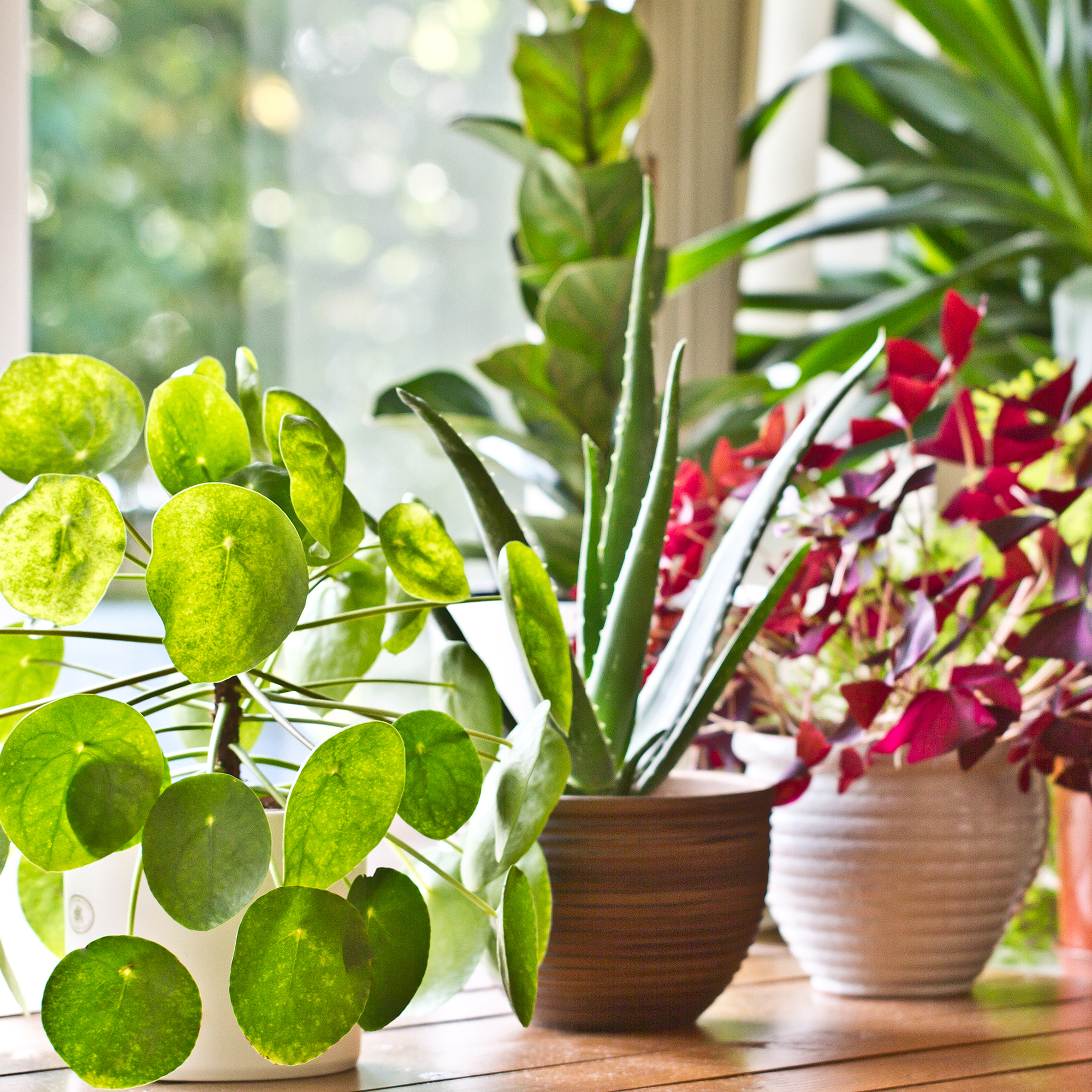Dendrobium Nobile Orchid: How To Care For This Graceful, Easy-Going Houseplant
Learn how to care for elegant dendrobium nobile orchids. These undemanding plants make a stunning addition to any orchid collection and are ideal for beginners.
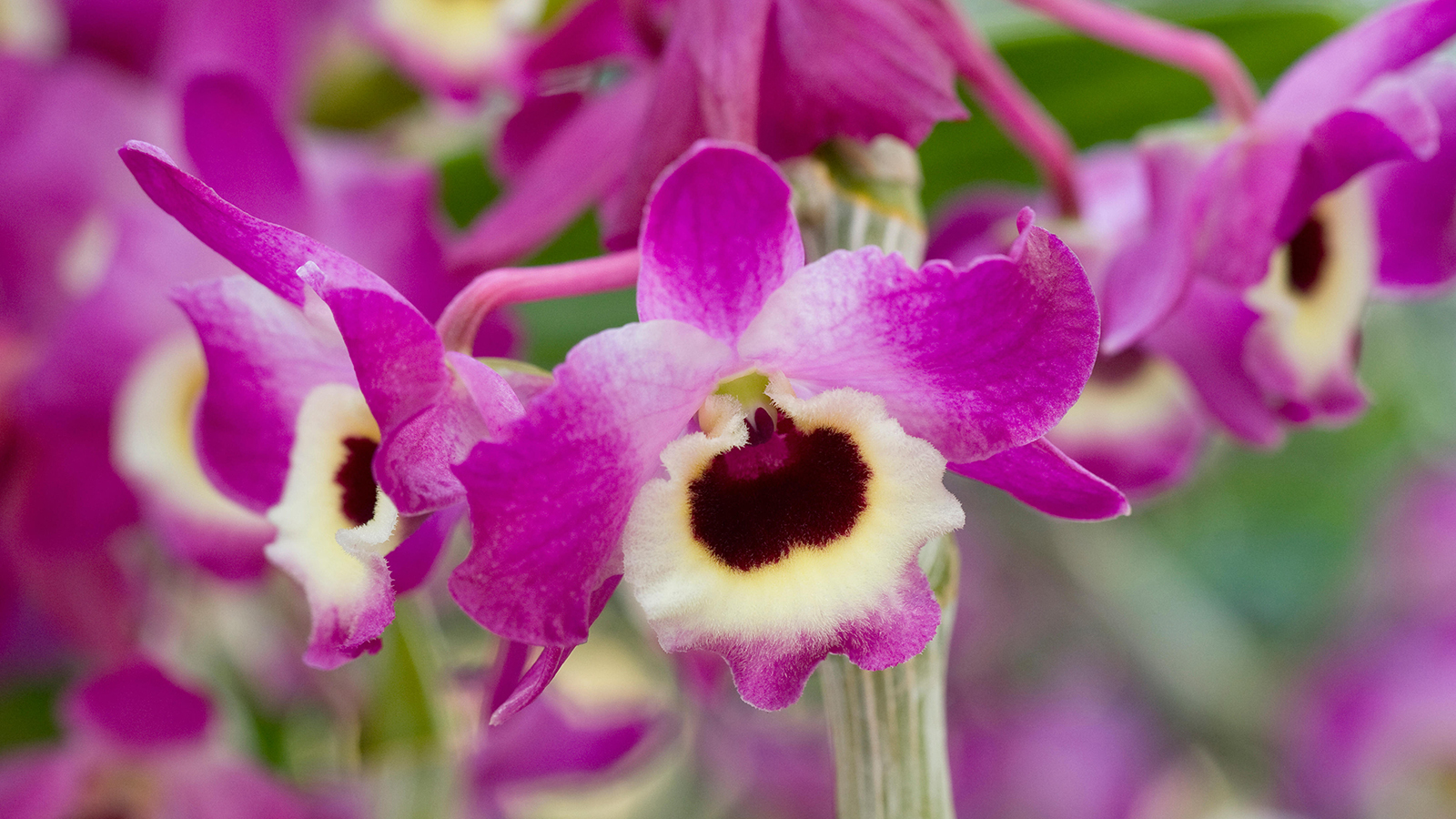

Melanie Griffiths
If you're looking for an orchid that isn't too fussy but puts on a stunning floral show spanning the seasons, then dendrobium nobile is the one for you. This elegant orchid blooms from winter into spring with a profusion of sweet-smelling blooms that last up to six weeks.
Quick Dendrobium Nobile Facts
Botanical name: Dendrobium nobile
Height: 4-20 inches (10-50cm)
Spread: Similar
Sun exposure: Partial shade
Soil requirements: Free draining, loamy potting medium
Hardiness zones: USDA 10-12, or grow indoors
When to plant: Spring
Dendrobium orchids make up a huge genus of over 1,000 species and are some of the most popular types of orchids for beginner growers. Dendrobium nobile is an outstanding member of this group, prized for its beautiful rose flowers measuring up to 2 inches (5cm) across, on short racemes, each with 2 to 4 blooms.
Proper orchid care for nobile dendrobium is determined by the fact it is an epiphytic plant, meaning it grows on tree branches or rocks, taking moisture and nutrients from the surrounding environment. It is also a pseudobulb orchid, meaning it can retain a certain amount of food and water in its bulbs to keep it healthy during dry spells.
While this species is considered one of the hard-to-kill orchids that anyone can grow, it does have specific cultural requirements.
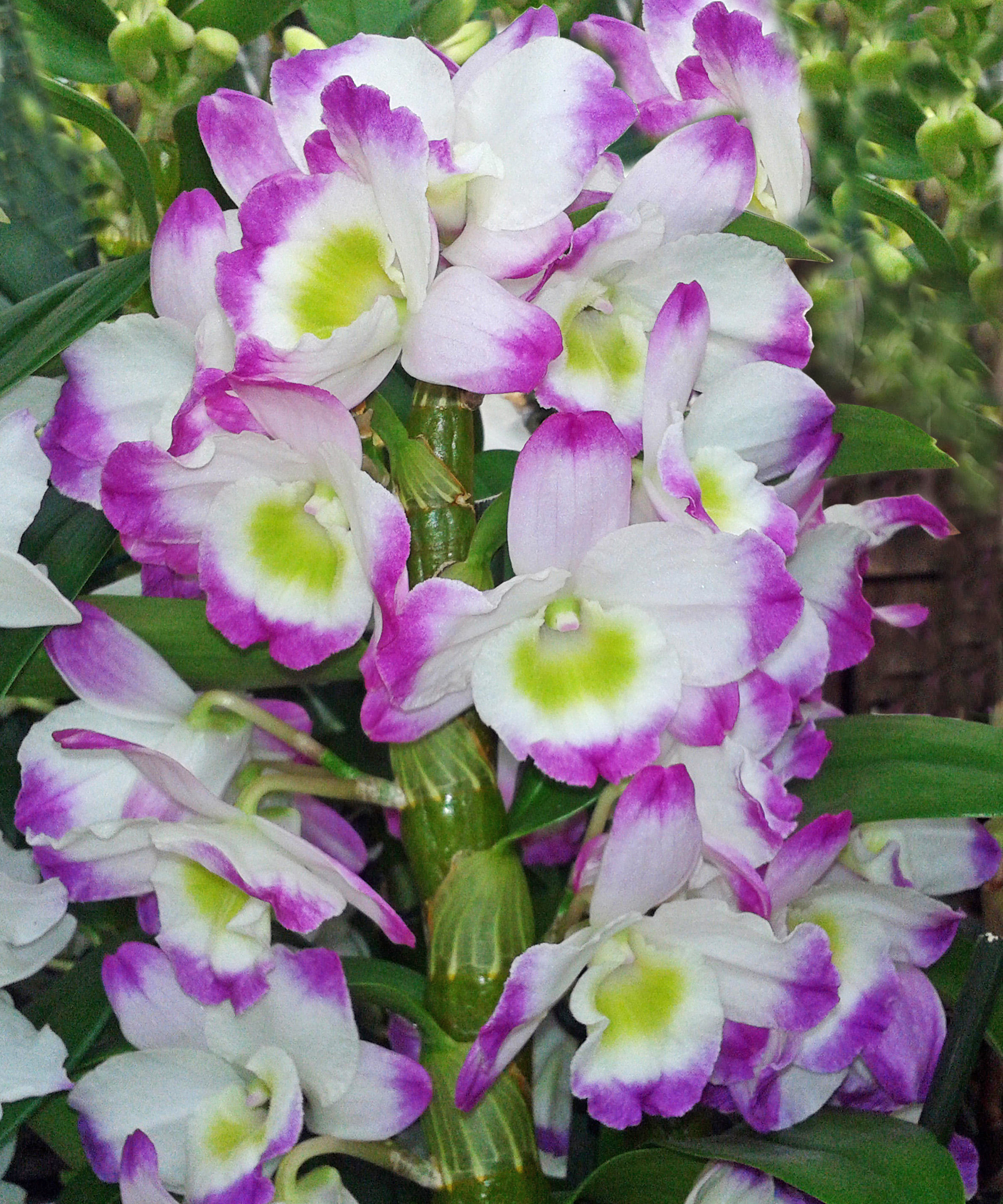
Dendrobium Nobile Orchid Care
Dendrobium nobile orchids are native to Asia, in high elevations where winters are cool and summers are warm and moist. There are many cultivars of this species.
The core plants are not difficult to grow provided they have the right light, medium, temperature, and water. While not as common as some orchids, dendrobium nobile are readily available for home growers.
Light Requirements
Orchid light needs for dendrobium nobile are higher than for many other species. These orchids do most of their growth in summer when the daylight is long. They are known to be a high-light variety that requires 2,000-4,000 foot candles of light.
Sign up for the Gardening Know How newsletter today and receive a free copy of our e-book "How to Grow Delicious Tomatoes".
Situate the plant in a well-lit spot where it will receive bright, indirect light. A south-facing window, with some protection from direct sunlight, is ideal. If your home lacks bright light during the day, consider using a broad-spectrum grow light to increase the orchid’s exposure.
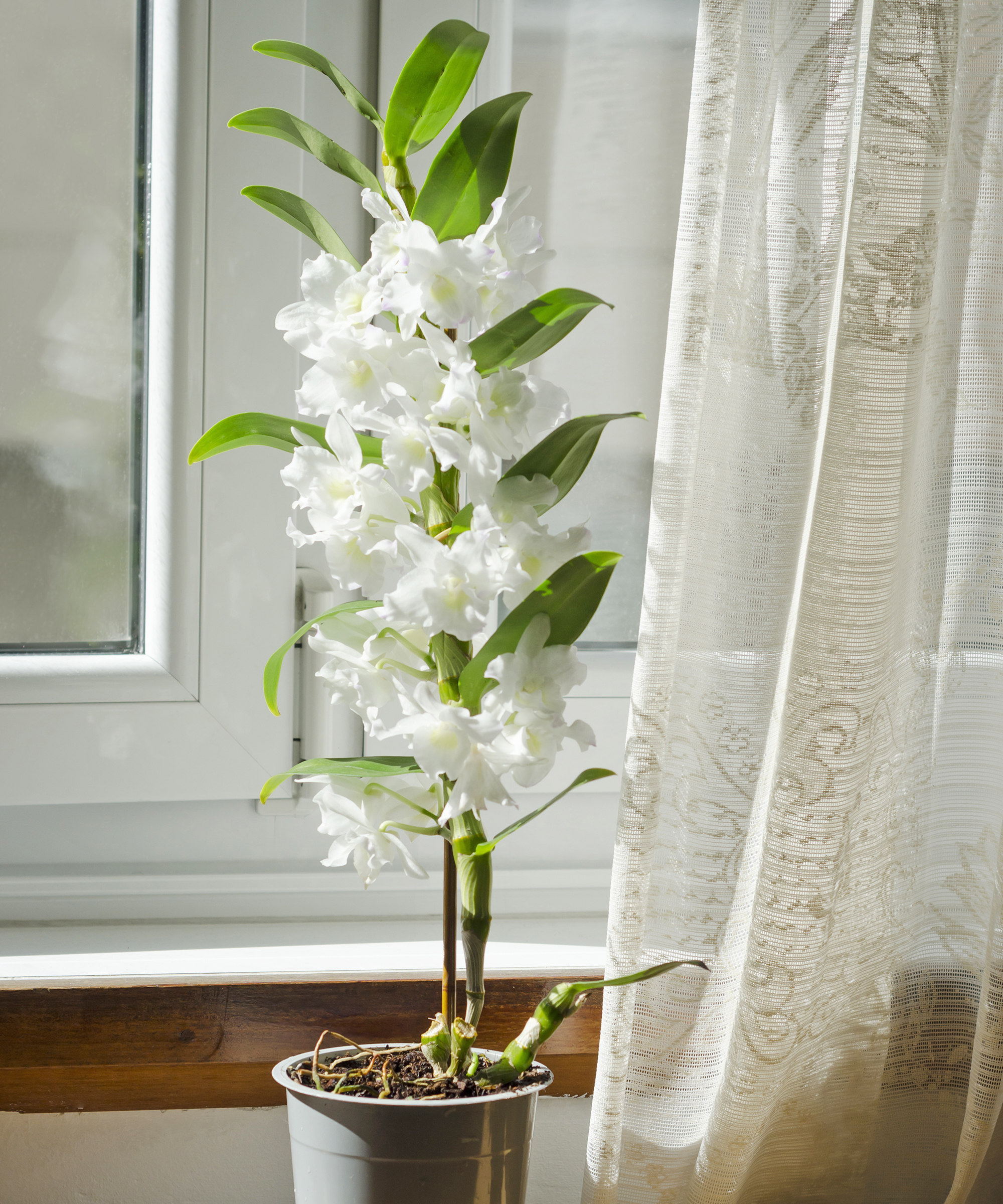
Temperature & Humidity
Flower production for all orchids is heavily influenced by differences in night and day temperatures. During the summer dendrobium nobile likes temperatures between 65-80°F (18-27°C). Ideal nighttime temperatures are 55-65°F (13-18°C). When the plant is not actively growing in winter, it thrives in temperatures at the lower end of this scale.
Dendrobium nobile has moderate orchid humidity levels of about 50 percent. Misting the plant daily will help accomplish this in the home interior. The addition of a humidifier or placing the container on a tray of gravel filled with water will also enhance the ambient moisture around the orchid.
Watering Needs
While D. nobile is actively growing in spring and summer, keep the soil medium moist, ensurig good drainage. It's vital to learn how to water orchids the right way – incorrect watering is one of the most critical orchid care mistakes.
Each time you water, add enough that it percolates out through the drainage holes, essentially flushing the soil. Use room temperature water. Then let the top surface of the soil dry before watering anew.
As temperatures cool and fall nears, begin tapering off water. The plant must experience cooler, drier conditions to encourage bud formation. By late fall give the plant little to no water as it is not actively growing. Water just enough to keep the plant from wrinkling. Once buds have begun forming, begin to keep the plant thoroughly moist. Where possible, use rainwater, or demineralized or distilled water.
Fertilizing
Orchid fertilizing is essential for a good show of flowers for dendrobium nobile. During the growing season, feed the plant with a balanced orchid fertilizer. Reduce fertilizing in the fall and avoid products high in nitrogen as it can impede flowering.
Flush the plant once per month to remove any built-up salts from fertilizing.
Soil & Compost
Knowing how to repot an orchid the right way starts with using the best possible potting mix, which should be loose and free-draining with some moisture retention.
Use a specialist orchid potting medium, such as shredded bark, including some moisture-retentive material such as sphagnum moss. You can make your own orchid potting mix by combining bark with moss, but ensure the bark pieces are small as dendrobiums have fine roots.
Compost tends to be too rich for orchids and can retain too much moisture, leading to root rot.
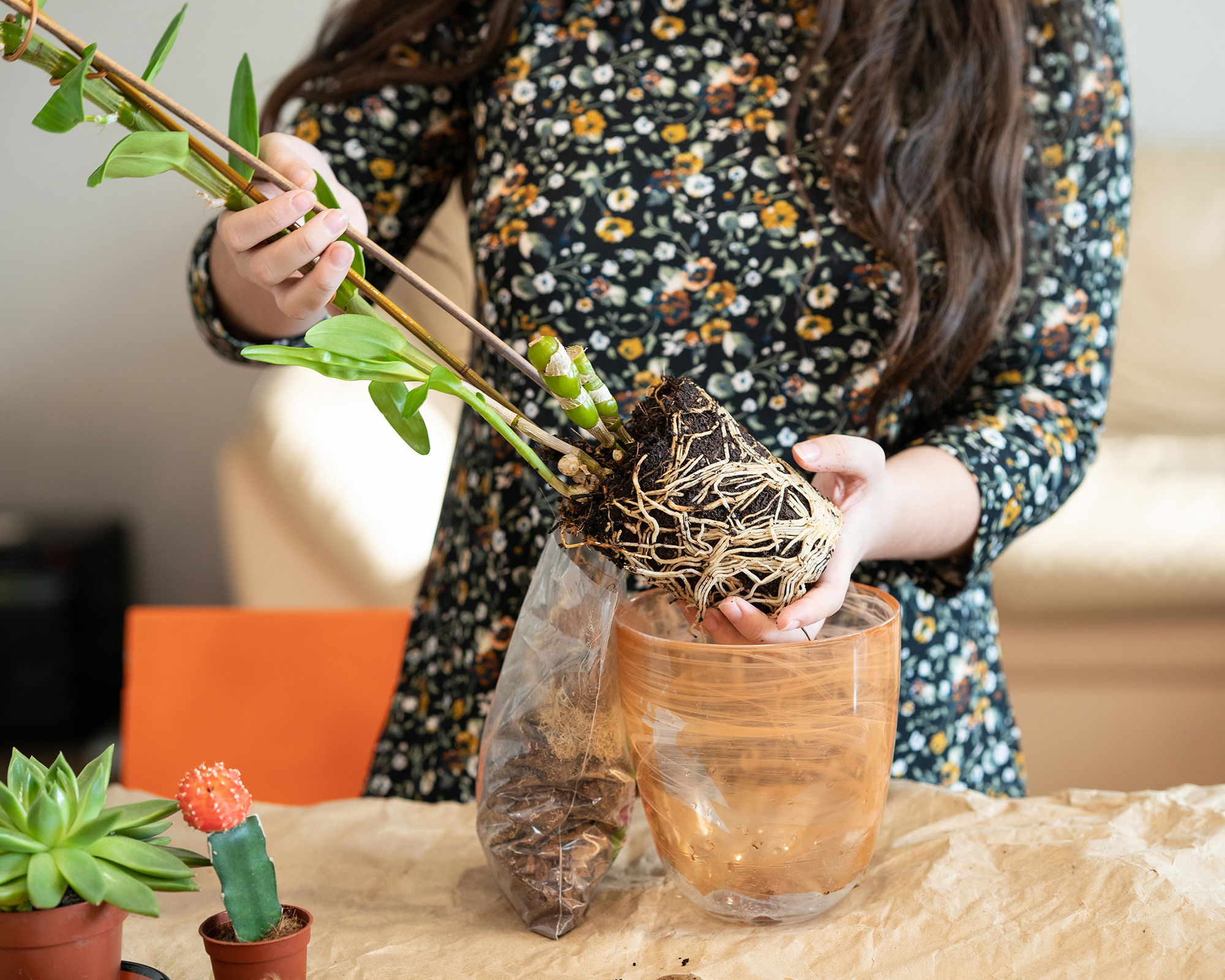
Pruning
Learning how to prune orchids is important to keep plants looking their best, Once the flowers are done on dendrobium nobile, cut out the stems. There is no need to cut off canes unless they become shriveled or woody – always leave at least three healthy canes in place.
Problems, Pests & Diseases
Dendrobium nobiles are not particularly prone to orchid problems, but there are some potential issues to be aware of.
- During the dry period, the pseudobulb and canes can shrivel. Add just enough water to make them plump again.
- Plants that are grown outdoors will be exposed to several orchid pests such as scale, mealybugs, and aphids. Wipe off the leaves with rubbing alcohol to remove the pests. Indoor plants are seldom troubled by pests – maintain good air circulation and inspect plants regularly.
- Improper mediums can lead to fungal diseases. Whenever pruning or repotting, sterilize utensils and containers to prevent the spreading of disease.
How to Propagate Dendrobium Nobile
Learning how to propagate orchids by division will allow you to create more dendrobium plants to grow your collection or give as gifts. The best time to propagate by division is after flowering, when the plant has outgrown its container.
- First, sterilize all tools to avoid fungal infection.
- Remove the plant from the potting mix, gently brush the debris away from the roots, then lay the orchid on its side.
- Identify mature pseudobulbs and gently separate them, making sure each section has roots and 2-4 pseudobulbs.
- Plant the sections into containers with fresh orchid mix.
- Keep the potting mix slightly moist and the buds should develop fresh growth within eight weeks, before going on to flower the following year.

How to Encourage Reblooming
In nature, dendrobium nobile orchids experience a 10-15°F (5-7°C) difference between day and nighttime temperatures, which is important to mimic in the home environment to make an orchid rebloom. If the room the orchid is positioned in does not experience a drop in temperature between day and night, then move the plant to a cooler room overnight.
The winter resting period is also crucial to initiating flowering. Feed and water the plant regularly during the growing season, but reduce in the fall and winter in the build-up to flowering.
Dendrobium orchids flower better when they are somewhat pot-bound, so when the plants outgrow their pot, only go up one size.
Can I Grow Debrobium Nobile Outdoors?
Dendrobium nobile plants have absolutely no frost tolerance and should only be grown outdoors year-round in the warmest USDA zones. However, they can benefit from being moved outside in the summer months, in bright shade.
The rest of the year they make excellent houseplants, and once they are satisfied with their growing conditions, even a novice gardener can successfully grow these graceful orchids indoors.
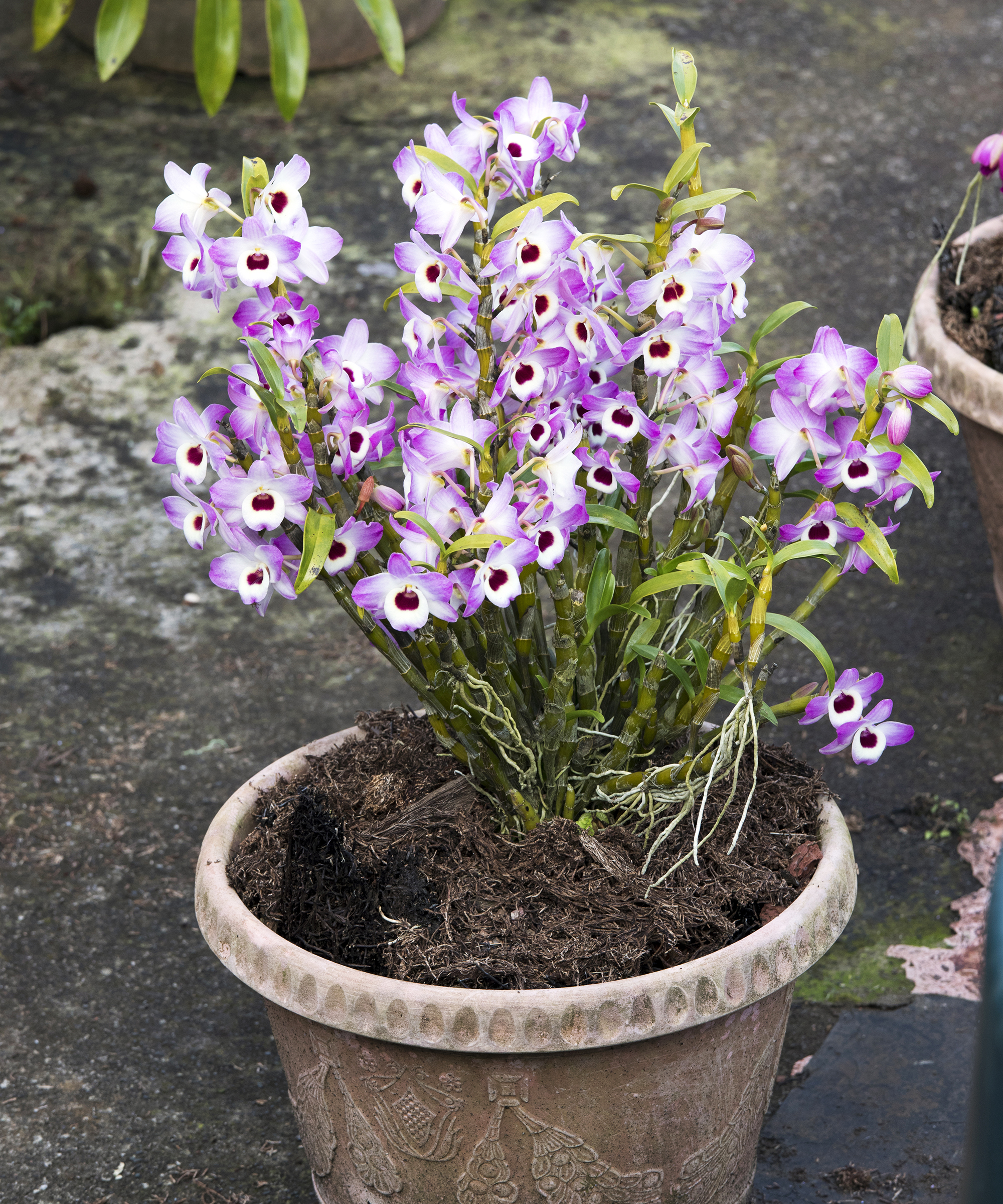
Are There Dendrobium Nobile Hybrids?
There are hundreds of hybrids of this plant. Not only do orchids readily hybridize in nature, but breeders have developed many hybrids. These hybrids may have slightly different cultural requirements from the parent species.
More Houseplant Inspiration
- Learn how to make a terrarium in a jar – and grow your own enchanting miniature ecosystem.
- A rare houseplant expert recommends 5 extraordinary, easy-care varieties to elevate your collection.
- Discover the perfect houseplant combinations for every room in your home.
- Shop stunning and unusual houseplants in the Gardening Know How Shop – supplied with self-watering planters.

Bonnie Grant is a professional landscaper with a Certification in Urban Gardening. She has been gardening and writing for 15 years. A former professional chef, she has a passion for edible landscaping.
- Melanie GriffithsEditor in Chief
